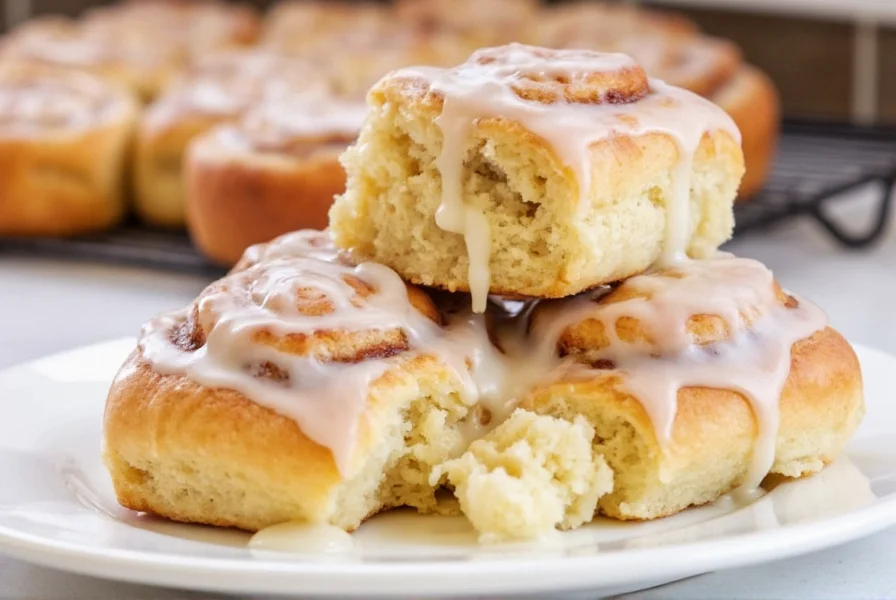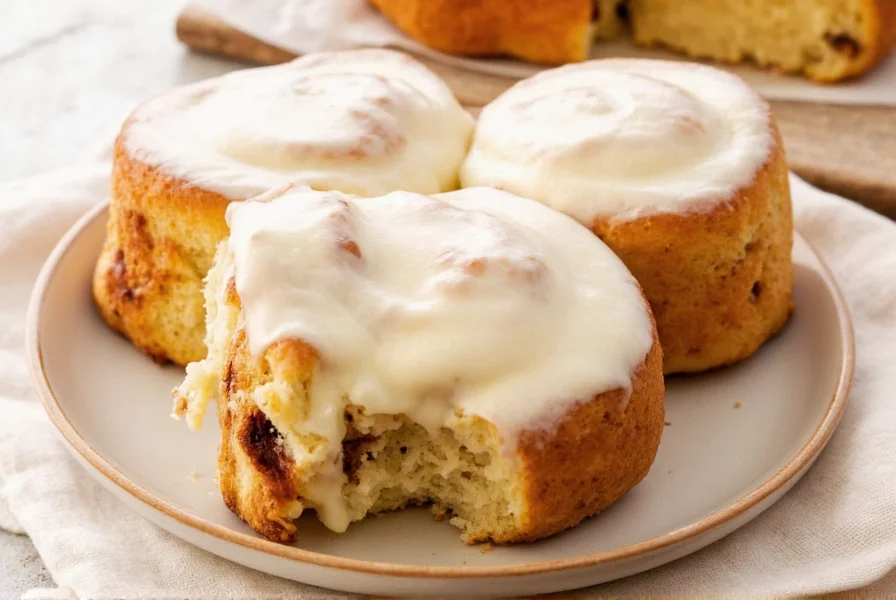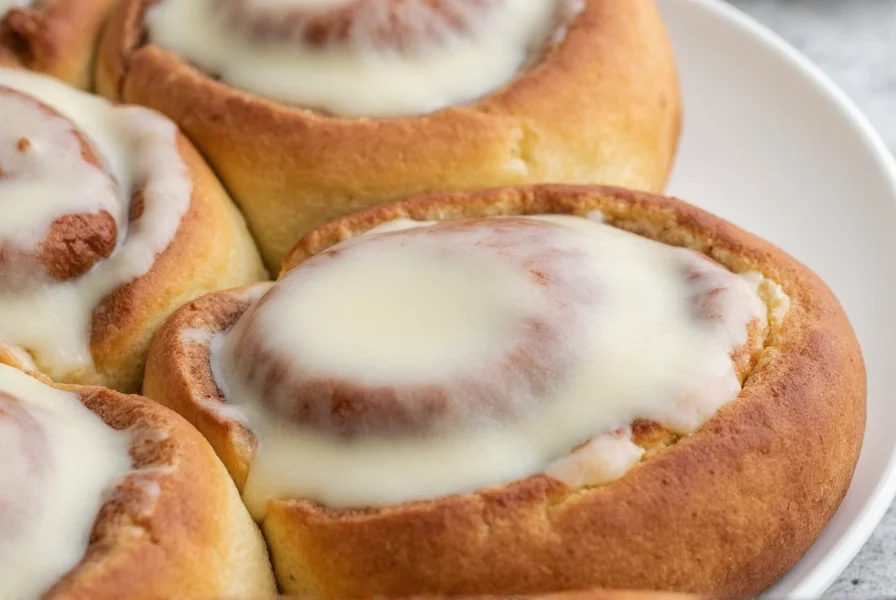Creating perfect cinnamon rolls with heavy cream requires understanding how this ingredient transforms the final product. Unlike standard recipes that use milk or water, heavy cream's unique properties elevate every component of your cinnamon rolls. This comprehensive guide reveals the science behind using heavy cream, provides a foolproof recipe, and shares professional techniques for achieving bakery-quality results at home.
The Science Behind Heavy Cream in Cinnamon Rolls
Heavy cream contains 36-40% milk fat, significantly higher than whole milk's 3.25%. This fat content plays several crucial roles in cinnamon roll development:
| Property | Effect on Cinnamon Rolls | Traditional Alternative |
|---|---|---|
| High Fat Content | Creates tender crumb structure by coating gluten strands | Milk produces slightly chewier texture |
| Lactose Content | Enhances browning and caramelization during baking | Less pronounced crust development |
| Protein Structure | Improves dough elasticity and rise | May require additional rising time |
| Moisture Retention | Extends freshness by slowing starch retrogradation | Stales more quickly at room temperature |
When you substitute heavy cream for milk in cinnamon roll recipes, you're not just adding richness—you're fundamentally changing the dough's chemistry. The fat molecules interfere with gluten development, resulting in a more delicate structure that practically melts in your mouth. This is why professional bakeries often use heavy cream in their premium cinnamon roll formulations.
Perfect Cinnamon Rolls with Heavy Cream Recipe
Follow this detailed recipe for the best cinnamon rolls with heavy cream. This method incorporates heavy cream in both the dough and icing for maximum flavor impact.
Ingredients
Dough:
- 1 cup heavy cream, warmed to 110°F (43°C)
- 2 ¼ tsp active dry yeast
- ⅓ cup granulated sugar
- 1 large egg, room temperature
- ¼ cup unsalted butter, melted
- 3 ½ cups all-purpose flour
- 1 tsp salt
Filling:
- ½ cup unsalted butter, softened
- 1 cup packed brown sugar
- 3 tbsp ground cinnamon
- 2 tbsp heavy cream
Cream Cheese Icing:
- 4 oz cream cheese, softened
- ¼ cup heavy cream, cold
- 1 cup powdered sugar
- 1 tsp vanilla extract
- Pinch of salt
Step-by-Step Instructions
- Activate the yeast: Warm heavy cream to 110°F (43°C), add sugar and yeast. Let sit 5-10 minutes until foamy.
- Mix dough: In large bowl, combine yeast mixture, egg, melted butter, flour, and salt. Mix until shaggy dough forms.
- Knead: Turn onto floured surface and knead 8-10 minutes until smooth and elastic. Heavy cream dough requires slightly less kneading than milk-based versions.
- First rise: Place in greased bowl, cover, and let rise in warm place for 1-1.5 hours until doubled.
- Prepare filling: Mix brown sugar, cinnamon, and softened butter with 2 tbsp heavy cream until paste-like.
- Roll and fill: Roll dough into 18x12 inch rectangle. Spread filling evenly, leaving ½ inch border. Roll tightly from long side.
- Second rise: Cut into 12 rolls, place in greased pan. Cover and let rise 45-60 minutes until puffy.
- Bake: Preheat oven to 350°F (175°C). Bake 22-25 minutes until golden brown.
- Make icing: Whip cold heavy cream to soft peaks, then mix with remaining icing ingredients.
- Finish: Drizzle warm rolls with icing and serve immediately.

Pro Tips for Heavy Cream Cinnamon Rolls
Mastering cinnamon rolls with heavy cream requires attention to specific details that differ from traditional recipes:
Temperature Control is Critical
Heavy cream's high fat content makes temperature management crucial. Warm the cream to exactly 110°F (43°C) for yeast activation—too hot will kill the yeast, while cold cream slows fermentation. During mixing, maintain dough temperature around 75-78°F (24-26°C) for optimal rise. Professional bakers use temperature-controlled proofing boxes to achieve consistent results with heavy cream doughs.
Avoid Overmixing the Dough
Heavy cream's fat content inhibits gluten development, so you'll need less kneading time than with milk-based recipes. Overmixing can cause the dough to become greasy as the fat separates. Stop kneading when the dough passes the "windowpane test"—when you can stretch a small piece thin enough to see light through it without tearing.
Heavy Cream Icing Technique
For the creamiest icing, whip the cold heavy cream to soft peaks before adding other ingredients. This incorporates air for a lighter texture while maintaining stability. Many home bakers make the mistake of adding all ingredients at once, resulting in a dense, heavy icing. The proper technique creates an icing that's rich but not overwhelming—a perfect complement to heavy cream cinnamon rolls.
Troubleshooting Common Issues
Even experienced bakers encounter challenges when making cinnamon rolls with heavy cream. Here's how to solve the most frequent problems:
Dense or Gummy Texture
This typically happens when the dough contains too much moisture from the heavy cream. Solution: Reduce liquid by 1-2 tablespoons if your kitchen is humid, or increase flour by 1-2 tablespoons. Heavy cream cinnamon roll dough should feel slightly tacky but not sticky.
Filling Leakage
Heavy cream makes fillings more liquid, increasing leakage risk. Prevent this by: 1) Using softened (not melted) butter in filling, 2) Adding 1 tbsp flour to filling mixture, 3) Creating a tight seal when rolling dough, and 4) Chilling rolls for 15 minutes before baking.
Excessive Browning
The lactose in heavy cream promotes browning, which can lead to over-browned tops while centers remain undercooked. Solution: Bake at 325°F (163°C) instead of 350°F, and tent with foil during last 10 minutes of baking. An oven thermometer ensures accurate temperature.

Storage and Serving Recommendations
One advantage of cinnamon rolls with heavy cream is their exceptional shelf stability. The high fat content slows staling, keeping rolls fresh at room temperature for 3-4 days—significantly longer than milk-based versions. For best results:
- Store in airtight container at room temperature (do not refrigerate, which accelerates staling)
- Reheat individual rolls in microwave for 15-20 seconds before serving
- Freeze unbaked rolls for up to 3 months—thaw overnight in refrigerator before baking
- Pair with strong coffee or espresso to balance the richness
For special occasions, consider adding complementary flavors that enhance the richness of heavy cream cinnamon rolls. A pinch of cardamom in the dough, orange zest in the icing, or a bourbon caramel drizzle creates sophisticated variations while maintaining the luxurious texture that makes heavy cream cinnamon rolls special.
Frequently Asked Questions
Can I substitute heavy cream with milk in cinnamon roll recipes?
While you can substitute milk for heavy cream, the texture and richness will differ significantly. Heavy cream's higher fat content (36-40% vs. milk's 3-4%) creates a more tender crumb and richer flavor. For best results with this recipe, use heavy cream as specified.
Why do cinnamon rolls with heavy cream stay moist longer?
Heavy cream's high fat content helps retain moisture in baked goods. The fat molecules coat the flour proteins, slowing down starch retrogradation (the process that makes baked goods stale). This is why cinnamon rolls made with heavy cream maintain their soft texture for 3-4 days at room temperature.
Can I use heavy cream in both the dough and icing for cinnamon rolls?
Yes, using heavy cream in both components creates the most luxurious results. In the dough, it produces a tender crumb, while in the icing it creates a rich, smooth consistency that doesn't require excessive powdered sugar. For the icing, use cold heavy cream and whip it to soft peaks before adding other ingredients.
What temperature should heavy cream be when making cinnamon roll dough?
For optimal results, use room temperature heavy cream (about 70°F/21°C) when incorporating it into yeast dough. Cold cream can slow yeast activation, while overly warm cream might kill the yeast. Room temperature cream blends more easily with other ingredients and helps maintain proper dough temperature during mixing.
How does heavy cream affect the browning of cinnamon rolls?
Heavy cream promotes superior browning due to its lactose content and higher fat percentage. The Maillard reaction (browning process) occurs more effectively with the proteins and sugars in heavy cream, resulting in a beautifully golden, slightly caramelized crust that enhances flavor complexity compared to rolls made with milk.











 浙公网安备
33010002000092号
浙公网安备
33010002000092号 浙B2-20120091-4
浙B2-20120091-4